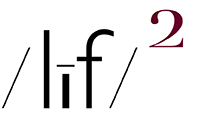ON THE LAST ENTRY THOMAS RINK LEFT A COMMENT which read, in part:
I think the hard part is not to decide which pictures are strong-like you said, one knows that while making the picture-but to decide which pictures to incorporate into a body of work…And these decisions are a time consuming process which cannot be sped up imho. One just has to live with the series of pictures for a while and hopefully decisions will reveal themselves.
I agree with Thomas for the most part but with one minor quibble / caveat. He writes that the editing process “cannot be sped up”. While that statement is true enough, I would write that speed has its place in editing pictures.
In my case, in a folder (on my computer) I assemble a number of pictures-35-40-which are suitable for inclusion in a given body of work. Then I view them in ADOBE BRIDGE as a group, a step which very quickly reveals a few pictures that do not quite cut the mustard. The next step is to open the remaining pictures and stack then one behind the other on my screen and, with my cursor hovering over the red X button the picture window, I click through them in fairly rapid fashion looking for quick first impressions which reveal the strongest evidence of being true to my vision.
iMo, the thing that makes this speed reading work is that there is very little, if any, thought involved in the process. Exactly, re: little thought wise, in the same manner I use when making my pictures. Quid est demonstratum, it’s about seeing, not thinking.
In any event, I did not invite you here today to write about editing pictures. I highlighted Thomas’ comment for the first sentence which stated, “to decide which pictures to incorporate into a body of work“…
Conventional photo wisdom dictates that a body of work should be unified by a repeating referent presented in a consistent picture making manner. In my particular case, such bodies of work are presented on my WORK page-picture windows, single women, decay, life without the APA, kitchen sink, et al. I have made photo books for all of my various bodies of work. Deciding which pictures -pre-final selection-to incorporate in each of these bodies of work, culling them from picture library, is a no-brainer.
However….
….then we come to my “real” true-to-my-vision body of work, discursive promiscuity. That is to write that I digress from subject to subject (discursive) in a very undiscriminating or unselective approach (promiscuity). The simple fact is that my personal (not commercial) picture making life has been spent looking at the any and all referents to be found in the world for their potential to be made into a picture. That is, as Garry Winogrand said:
“I photograph to find out what something will look like photographed.”
So, the question for me becomes, does a collection of pictures of wildly diverse referents qualify as a body of work. (if William Eggleston is an example, the answer is “yes”. Emphatically so). iMo-I and a number of gallery directors, who upon viewing my early ad hoc portfolios-comprised of a variety of referents (cuz I did not, at that time, have enough pictures of similar referents to create separate bodies of work) perceive that my pictures are unified by my attention to form and my singular manner of making pictures. That manner being; one format (square), one lens (or primarily so-mostly made with a moderate wide angle lens), clean “real-world” color and the ever-present black border and vignette. And, of course, my rejection of le grand geste, picture making wise, and my embrace of the commonplace.
The idea that my pictures of wildly divergent referents hold together as a body of work was emphatically reinforced over the past week when I was thinking about the topic of editing. That drove to pull out 3 of my photo books that were not thematic referent oriented; 2019 ~ the year in review, Marking Time ~ Coronavirus Comes to Town, and, appropriately enough, Discursive Promiscuity ~ One Year With the IPhone. Books that I had not picked up and viewed over the past year or so. And therein is a point in favor of Thomas’ idea of “live with the series of pictures for a while and hopefully decisions will reveal themselves.” …
…After not viewing these books and the pictures therein for a while, the decision to make these books revealed itself to be a very good decision. That’s cuz I was very impressed with how well the pictures in each book hung together as a very unified bodies of work.
FYI, the screenshot in this entry is the start of putting together and then editing a collection of pictures for Discursive Promiscuity ~ Volume II.
